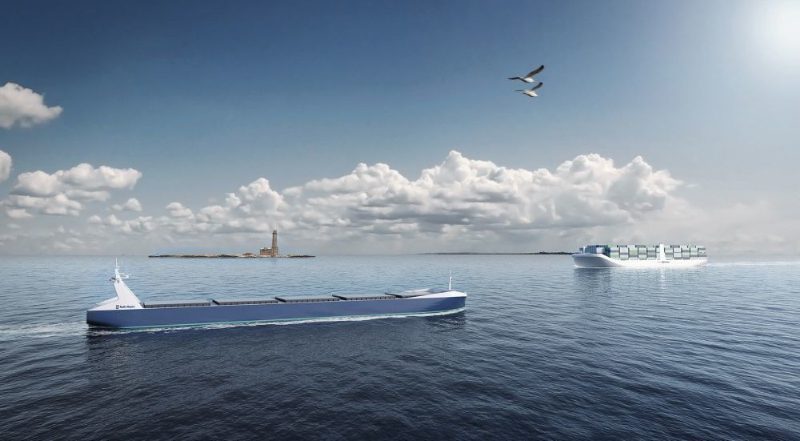Photo credit: Rolls-Royce.
The Business of Shipping is new column from Ira Breskin, senior lecturer at SUNY Maritime College in the Bronx, NY and author of The Business of Shipping (9th edition), North America’s most comprehensive industry-focused book explaining and analyzing marine transportation and related industries, both domestic and international.
By Ira Breskin – Uptake of fully autonomously-operated ships, given inherent and unaddressed liability, will be gradual and measured.
Speakers offered this this sober and refreshing consensus prediction last week at the 25th annual Hellenic-American/Norwegian-American Chambers of Commerce Shipping Conference in New York City.
The technology’s initial impact will be most profound in short sea shipping operations, said Pia Meling, vice president of Massterly, a Kongsberg/Willhemsen technology joint venture. “For the ocean-going fleet, it (autonomous shipping) is a long-time away, maybe never,” she said.
Automation (increasingly monitored and controlled by shore-based crew) initially will be focused on dull, dirty and dangerous work, Meling added.
Technology uptake will be gradual, focusing first on automating simple processes on smaller ships, making repetitive journeys, said Roberto Coustas, CEO, Design DeepSea Technologies. The firm uses artificial intelligence software to enhance vessel monitoring.
Retarding faster acceptance is the absence of a legal framework to assess risk tied to potential failure of underlying autonomous shipping technology that could result in a vessel collision or grounding, said Muge Anber-Kontaksis. She is vice president, Global FD&D manager and counsel at the American P&I Club in New York.
Among the biggest technological risks is failure of communication links to shore-based personnel, Anber-Kontaksis said. Also, regulations addressing the role of shore-based crew don’t exist, she added.
What’s also required for greater acceptance of autonomous shipping technology is availability of operating data, used to establish premiums, according to Anber-Kontaksis. “Rates are experience driven,” she said. In fact, the most immediate insurance-related gains for ship owners employing autonomous technology could result from fewer claims from crew, given their reduced number, Anber-Kontaksis added.
Any projected payback tied to initial technology adoption likely will be modest because automation enhancements generally have no immediate return on investment, Coustas said.
Ira Breskin, a senior lecturer at SUNY Maritime College in the Bronx, NY, is author of The Business of Shipping (9th edition).
Later this month, Breskin will be offering a lecture, Issues Facing the Shipping Industry, at the National Lighthouse Museum in Staten Island, New York. Event Date: Sunday, February 24, 2019 at 2:00 p.m. For details, email [email protected] or call 718-390-0040.

 Join The Club
Join The Club











